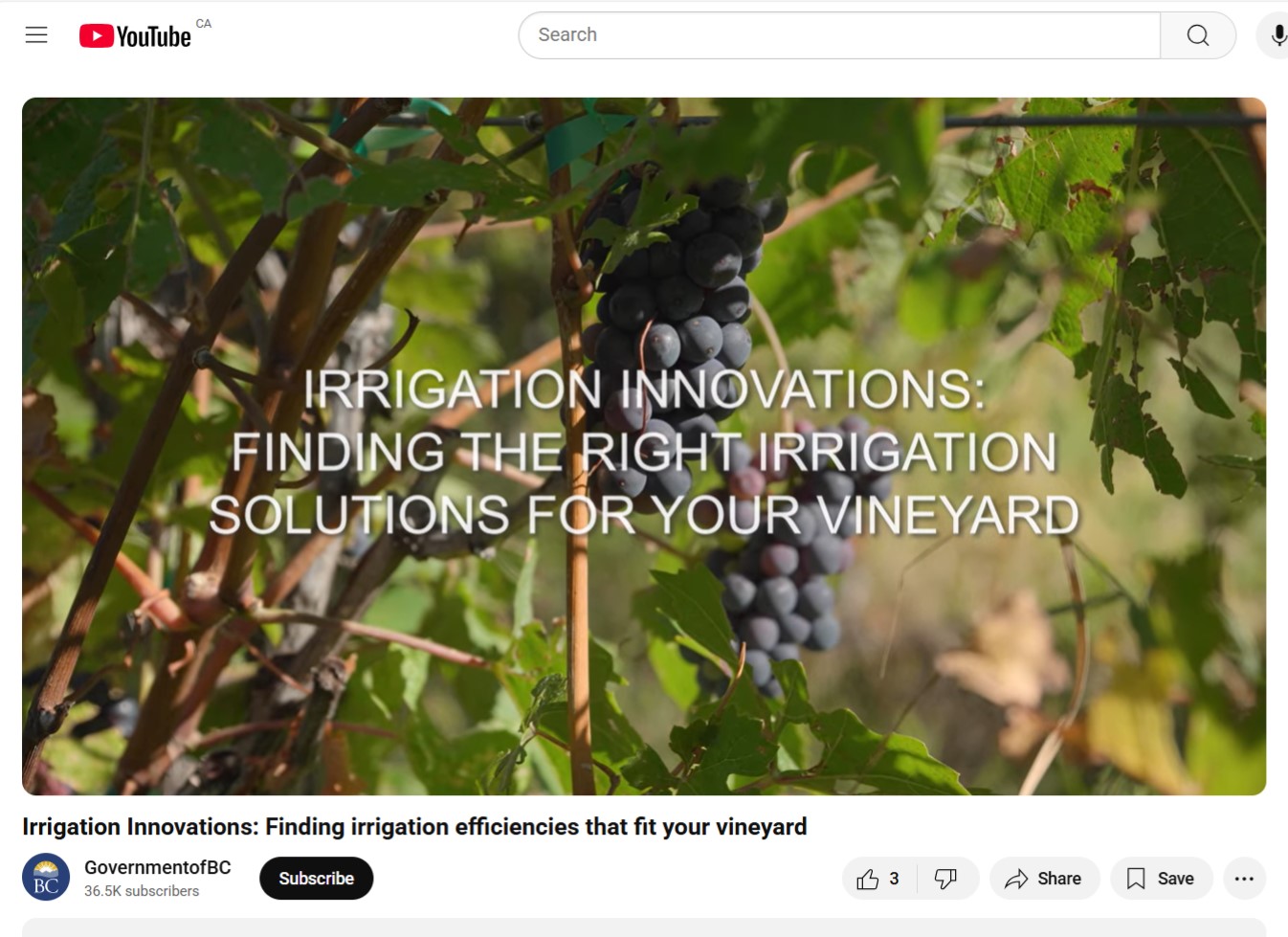Irrigation
Irrigation management
Before implementing any water conservation strategies, it is imperative to ensure the irrigation system is designed properly in the first place, and to check if the system is maintained and operated according to the design parameters. The following documents will help you with the irrigation design requirements and assessment of your systems:
- Irrigation Management Guide
- Irrigation System Assessment Guide
- Chemigation Guidelines
- Sprinkler Irrigation Manual
- Trickle Irrigation Manual
Irrigation scheduling
Once the design and assessment of the irrigation system are completed to ensure the system integrity, you should schedule your irrigation based on farm location, crop type, soil type and climate condition in your area. Below are the factsheets that will help you to run a proper irrigation schedule:
- Determining Actual Annual Water Use of Trickle Irrigation Systems (PDF)
- Developing a Trickle Irrigation Schedule Using Site Parameters (PDF)
- Soil Water Storage Capacity and Available Soil Moisture (PDF)
- Irrigation Scheduling Techniques (PDF)
- Irrigation Scheduling with Tensiometers (PDF)
- Sprinkler Irrigation Scheduling Using a Water Budget Method (PDF)
- Trickle Irrigation Scheduling Using Evapotranspiration Data (PDF)
- Agriculture Irrigation Scheduling Calculator (PDF, 1.5 MB)
Frost protection
In B.C., frost protection systems are mostly used to ensure that maximum crop production and quality can be achieved every year. The B.C. Frost Protection Guide explains the types of frosts that may occur, passive and active methods of frost protection and general guidelines on designing irrigation systems to protect against frost.

Irrigation efficiencies exist for all sizes of vineyards and budgets. This video explores three different vineyard operations in size and water challenges, and their solutions to increase water use efficiency.
Watch: "Irrigation Innovations: Finding irrigation efficiencies that fit your vineyard"
Contact information
Phone:
1 888 221-7141
Email:
AgriServiceBC@gov.bc.ca
